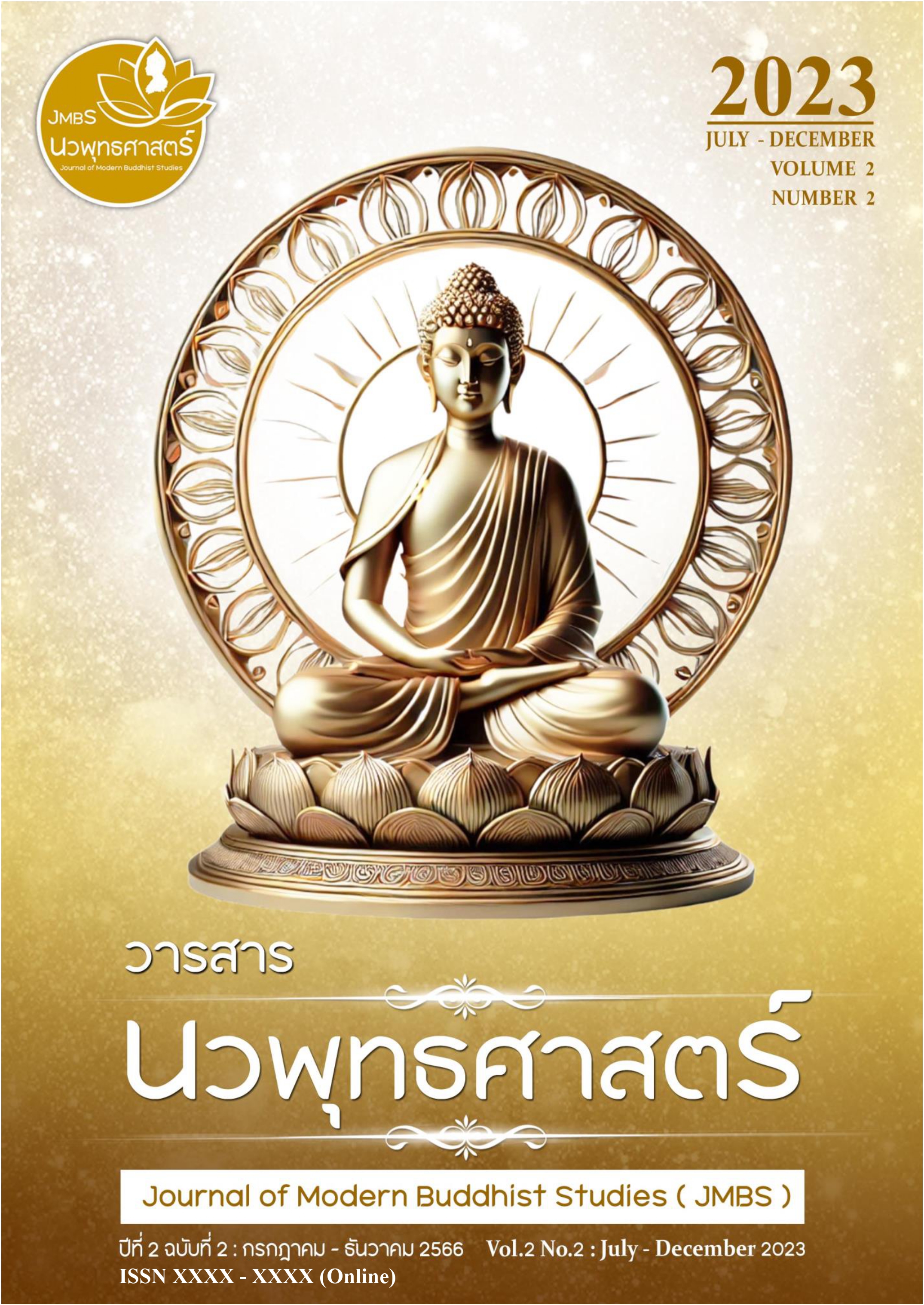THE DEVELOPMENT OF KWANG TO PROCESS ARTS AND CULTURAL SPACE OF WAT RONG SUEA TEN
Keywords:
The Development to process, Kwang of Arts and Cultural, Wat Rong Suea TenAbstract
The research titled “The Development Process of a Creative Arts and Cultural Courtyard at Wat Rong Suea Ten” aimed to: Study the process of organizing a creative arts and cultural courtyard at Wat Rong Suea Ten. Analyze the process of organizing a creative arts and cultural courtyard at Wat Rong Suea Ten. This study employed qualitative research methods, collecting data through in-depth interviews with 27 key informants selected through purposive sampling. Key Findings: 1.Process of Organizing the Creative Arts and Cultural Courtyard The arts and cultural courtyard at Wat Rong Suea Ten integrates art and culture, with the ordination hall (ubosot) as the centerpiece. The hall features prominent applied art, using striking blue tones contrasted with gold. Surrounding areas of the temple are developed into learning spaces and markets for the community, offering handicrafts, local products, and traditional food. 2.Analysis of the Development Process of the Creative Arts and Cultural Courtyard The development incorporates the concept of “Kad Mua Khrua Laeng” (traditional evening market), enhancing and adapting it to reflect Lanna identity. The market features the sale of OTOP products, cultural performances such as traditional Lanna dances, Klong Sabatchai drum performances, and a light-and-sound show titled “Phaya Naga Offering Lotus to the Buddha”, aimed at attracting tourists and conveying the history and unique identity of Wat Rong Suea Ten. The process of organizing the creative arts and cultural courtyard promotes local arts and culture, generates income for the community, and fosters cultural tourism development in Chiang Rai Province.
References
กนกวรรณ ชูชาญ (2552). “การจัดการความรู้ทางทรัพยากรวัฒนธรรมโดยผู้นำชุมชนเพื่อการท่องเที่ยว ชุมชนบ้านผาหมอน ดอยอินทนนท์ จังหวัดเชียงใหม่”. วิทยานิพนธ์ศิลปศาสตรมหาบัณฑิต. บัณฑิตวิทยาลัย: มหาวิทยาลัยธรรมศาสตร์.
จิตรานันท์ แสงศรีจันทร์ (2555). “แนวทางการจัดการภูมิปัญญาการละเล่นท้องถิ่นชุมชนย่าน วัดดุสิตาราม เขตบางกอกน้อย กรุงเทพมหานคร”. วิทยานิพนธ์ศิลปศาสตรมหาบัณฑิต. บัณฑิตวิทยาลัย: มหาวิทยาลัยศิลปากร.
เจนนิสา เกศมณี (2566). การแสดงพื้นเมืองสี่ภาค. สืบค้นข้อมูลจาก http://jenniasketmanee.blogspot .com.
ชุติมา เวทการ (2551). การจัดการเรียนรู้สาระทัศนศิลป์บนพื้นฐานวัฒนธรรมชุมชน. กรุงเทพมหานคร: สำนักพิมพ์แห่งจุฬาลงกรณ์มหาวิทยาลัย.
ธนิก เลิศชาญฤทธ์ (2551). การจัดการทรัพยากรวัฒนธรรม. กรุงเทพมหานคร: คณะโบราณคดี มหาวิทยาลัยศิลปากร.
ปริยาภรณ์ ตั้งคุณานันต์ (2559). “การศึกษาไทย: จากอดีต ปัจจุบัน สู่อนาคต”. วารสารครุศาสตร์ อุตสาหกรรม. 15 (1) (มกราคม-เมษายน): 1-5.
ปรีดา พูลสิน (2554). การมีส่วนร่วมของชุมชนในการจัดการความรู้ทางศิลปวัฒนธรรม: กรณีศึกษา ชุมชนวัดโสมนัส. กรุงเทพมหานคร: กรมส่งเสริมวัฒนธรรม กระทรวงวัฒนธรรม.
พระสมุทรวชิรโสภณ (2557). “การพัฒนาส่งเสริมศิลปวัฒนธรรมไทยของคณะสงฆ์”. วารสารสันติศึกษาปริทรรศน มจร. 2 (1) (มกราคม-มิถุนายน): 73-74.
วรสิกา อังกูร และคณะ (2557). “รูปแบบการจัดการศึกษาและเผยแผ่ศาสนธรรมของวัดในพระพุทธศาสนา : กรณีศึกษาแหล่งการเรียนรู้ของวัดพระเชตุพนวิมลมังคลาราม ราชวรมหาวิหาร กรุงเทพมหานคร”. รายงานการวิจัย. สำนักงานคณะกรรมการการศึกษาแห่งชาติ (สกศ.).
วีรวุฒิ โอตระกูล (2520). มาอนุรักษกันเถิด ฉบับ 200 ปี กรุงรัตนโกสินทร์. กรุงเทพมหานคร: โอเดียนส์โตร์.
ศักย์ศรน์ มงคลอิทธิ (2558). รูปแบบและกระบวนการพัฒนาการพัฒนาเมืองเชียงแสน จังหวัดเชียงราย. กรุงเทพมหานคร: นานมีบู๊ค.

Additional Files
Published
How to Cite
Issue
Section
License

This work is licensed under a Creative Commons Attribution-NonCommercial-NoDerivatives 4.0 International License.





